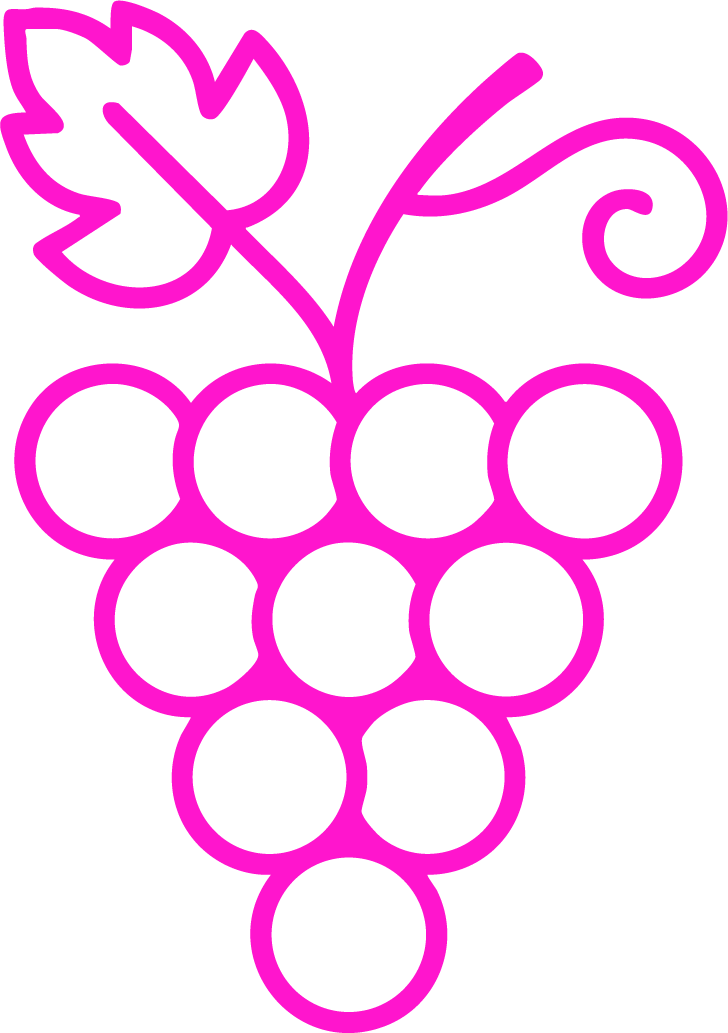Tempranillo
🔊 Pronunciation: tem-prah-nee-yoh
🔍 Quick Summary
Spain’s signature red grape, Tempranillo delivers savory, cherry-fruited wines with gentle tannins that shine in Rioja and beyond.
📜 History
Origin: Ancient Iberian grape, cultivated for centuries in Spain — ancestry debated but likely native to northern Spain.
Name meaning: From “temprano” (Spanish for “early”), referring to its early ripening.
Historic roots: Cultivated in Rioja since at least the 13th century, valued for balance and ageworthiness.
Monastic expansion: Spread through Spain in the Middle Ages via monastic orders improving vineyard practices.
Global journey: Arrived in Portugal (where it's known as Tinta Roriz and Aragonez) and spread to New World regions like Argentina and the US.
🧠 What to Know
Celebrated for its classic balance and versatility in winemaking.
Early ripening: True to its name, needs careful harvest timing for freshness.
Savory complexity: Combines red fruit with leather, tobacco, and earth.
Aging star: Shines with oak aging, developing vanilla and spice notes.
Blend-friendly: Often blended with Garnacha, Graciano, and Mazuelo in Rioja.
Global footprint: Gaining traction in California, Argentina, and Australia.
📍 Where It’s Found
🇪🇸 Rioja – Clay-limestone soils + mild climate = Elegant, oak-aged reds
Temperate Continental | 75–85 °F (24–29 °C) avg daytime highs
🇪🇸 Ribera del Duero – Alluvial soils + hot days, cool nights = Powerful, structured wines
Continental | 85–95 °F (29–35 °C) avg daytime highs
🇳🇬 Toro – Sandy soils + scorching summers = Dense, potent, tannic reds
Hot Continental | 90–100 °F (32–38 °C) avg daytime highs
🇵🇹 Portugal (Douro, Dão) – Schist soils + hot sun = Rich, spicy Tinta Roriz
Mediterranean | 85–95 °F (29–35 °C) avg daytime highs
🇺🇸 California – Varied soils + dry heat = Ripe, fruit-forward interpretations
Warm Mediterranean | 85–95 °F (29–35 °C) avg daytime highs
👅 Flavor & Style
Classic balance of fruit, savory earth, and oak.
Color: Medium ruby with garnet tones with age
Aromas & Flavors:
Primary: Red cherry, plum, dried herbs
Secondary: Vanilla, coconut, tobacco from oak
Tertiary: Leather, earth, dried fig with age
Structure: Moderate to firm tannins, fresh acidity
Body: Medium to full
Alcohol: Typically 13–14.5% ABV
🛠 Winemaking Notes
Winemakers embrace tradition and innovation to showcase Tempranillo’s aging potential.
Fermentation: Often in stainless steel for purity or concrete for gentle oxygenation.
Aging: American and French oak for vanilla, coconut, and spice notes.
Classification: Crianza, Reserva, Gran Reserva in Rioja signal increasing oak and bottle age.
Blending: Paired with Garnacha and Graciano for complexity and structure.
🍽 Food Pairing Ideas
Pairs beautifully with rustic, savory dishes that match its earthy, oaked style.
Savory: Roast lamb, chorizo stew, grilled mushrooms
Cheese: Manchego, aged Mahón, Pecorino
Unexpected: BBQ ribs, mole poblano, roasted red pepper hummus
🔗 Related Topics to Explore
🍇 Garnacha – Juicy, berry-rich blending partner
🍇 Graciano – Adds acidity and perfume to Rioja blends
🛢 American Oak Aging – Coconut, vanilla, and classic Rioja signature
🌱 Limestone Soils – Elegance and freshness in Rioja



